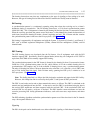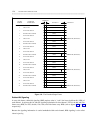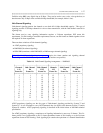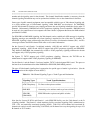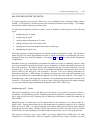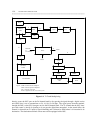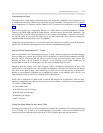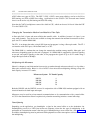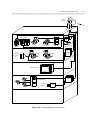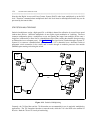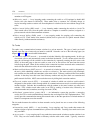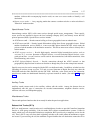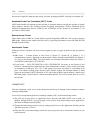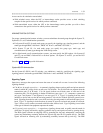1-32 MULTIPLEXED COMMUNICATION
_ ___________________________________________________________________________________________________________________________
_ ___________________________________________________________________________________________________________________________
_ ___________________________________________________________________________________________________________________________
AT&T offers two types of CSUs. The ESF T1 CSU, AT&T’s most recent offering, can be set for D4 or
ESF framing, and ZCS or B8ZS line coding. Applications for the 550/551 CSU are much more limited
since it can be set for only D4 framing and ZCS line coding.
Note that the 740/741 multiplexers come with a built-in CSU, which can be used in lieu of either the ESF
T1 or the 550/551 CSU.
Changing the Transmission Medium from Metallic to Fiber-Optic
A fiber-optic link is faster and more reliable than metallic cable. In addition, because it is faster, it can
carry more channels. Two devices are available to change the transmission medium from metallic to fiber-
optic: the FT-1 and the DDM-1000.
The FT-1 is an adapter that takes a single DS1 input and propagates it along a fiber-optic trunk. The FT-1
can interface with a DS1 port, a D4 channel bank, or a CSU.
The DDM-1000 is a modem that can change the transmission medium among metallic, fiber-optic, and
microwave, depending upon how the unit is equipped. If a DDM-1000 is equipped for electrical signaling
at one end, and optical signaling at the other, it can propagate the signals of up to 56 T1 trunks along a
single fiber-optic trunk at 90 Mbps.
Multiplexing with Microwave
Often it is cheaper to send information from one site to another through microwave than it is to lay either a
fiber-optic or metallic cable. Below is a list of AT&T’s four microwave multiplexing offerings, along with
their capacity in terms of T1 trunks:
Microwave System T1 Trunk Capacity
DR23N 4
DR18M 16
DR18W 28
DR23W 28
Both the DR18W and the DR23W are used in conjunction with a DDM-1000 modem equipped with an
electrical interface for both input and output.
Microwave may be used for private-network communications or for communication with a central office.
A CSU in the transmission stream is required only when the networking includes a central office hop.
Demultiplexing
Depending on the application, you demultiplex a signal at the central office or at the destination site.
Demultiplexing occurs in a LIFO (last-in-first-out) sequence, where the last type of multiplexing to be
performed on a transmission stream is the first type of demultiplexing to occur on the line. (See figure 1-9.)
In addition, demultiplexing must be performed with equipment set at the same options as those assumed for
the multiplexing.




